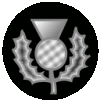
The 9th (Scottish) Division, was an infantry division of the British Army during the First World War, one of the Kitchener's Army divisions raised from volunteers by Lord Kitchener to serve on the Western Front during the First World War.
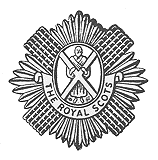
The Royal Scots , once known as the Royal Regiment of Foot, was the oldest and most senior infantry regiment of the line of the British Army, having been raised in 1633 during the reign of Charles I of Scotland. The regiment existed continuously until 2006, when it amalgamated with the King's Own Scottish Borderers to become the Royal Scots Borderers, which merged with the Royal Highland Fusiliers, the Black Watch, the Highlanders and the Argyll and Sutherland Highlanders to form the Royal Regiment of Scotland.

The Argyll and Sutherland Highlanders was a line infantry regiment of the British Army that existed from 1881 until amalgamation into the Royal Regiment of Scotland on 28 March 2006.

The 52nd Lowland Volunteers is a battalion in the British Army's Army Reserve or reserve force in the Scottish Lowlands, forming the 6th Battalion of the Royal Regiment of Scotland, also known as 6 SCOTS. Due to its erstwhile association with the 1st Regiment of Foot, it is the senior Reserve line infantry battalion in the British Army. It is one of two Reserve battalions in the Royal Regiment of Scotland, along with 51st Highland, a similar unit located in the Scottish Highlands.

The 51st Highland Volunteers is a battalion in the British Army's Army Reserve or reserve force in the Scottish Highlands, forming the 7th Battalion of the Royal Regiment of Scotland, also known as 7 SCOTS. It is one of two Reserve battalions in the Royal Regiment of Scotland, along with 52nd Lowland, a similar unit located in the Scottish Lowlands.
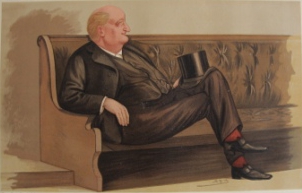
Sir John Hay Athole Macdonald, Lord Kingsburgh, KCB, PC, PRSSA, FRS, FRSE was a Scottish Conservative Party politician and later a judge.
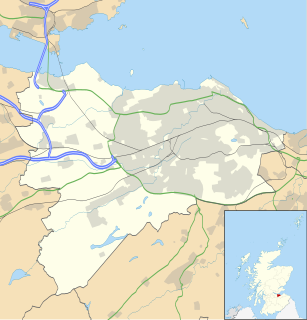
Redford Cavalry and Infantry Barracks is located on Colinton Road, near the Edinburgh City Bypass, east of the suburb of Colinton in Edinburgh, Scotland.

The Royal Regiment of Scotland is the senior and only Scottish line infantry regiment of the British Army Infantry. It consists of four regular and two reserve battalions, plus an incremental company, each formerly an individual regiment. However, each battalion maintains its former regimental pipes and drums to carry on the traditions of their antecedent regiments.
The Queen's Edinburgh Rifles was a brigade of Rifle Volunteers raised in the City of Edinburgh in 1859. It later formed two battalions of the Royal Scots, which fought in World War I at Gallipoli, in Palestine and on the Western Front. The two battalions combined between the world wars before being converted into an air defence regiment of the Royal Artillery (RA). This served in Anti-Aircraft Command during World War II and continued in the postwar Territorial Army (TA) until 1961, when its successors were converted into Royal Engineers (RE).
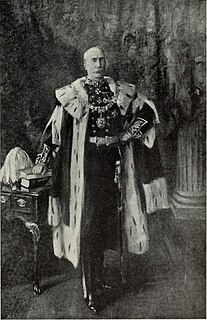
Brigadier-General Sir Robert Cranston was a Scottish military officer who served as Lord Provost of Edinburgh from 1903 to 1906. He had an illustrious military career largely with the Volunteer Force.

The 155th Brigade was an infantry brigade of the British Army that saw active service in both World War I and World War II. Assigned to the 52nd (Lowland) Division, the brigade saw active service in the Middle East and on the Western Front during the First World War. During the Second World War, now the 155th Infantry Brigade, it continued to serve with the 52nd Division in Operation Dynamo, and later in North-western Europe from late 1944 until May 1945.

The 45th Infantry Brigade was an infantry brigade of the British Army that saw active service in both the First and Second World Wars with 15th (Scottish) Division.
221st Mixed Brigade was a Scottish Home Service formation of the British Army that served under various titles throughout World War I.

The Rangers was a volunteer unit of the British Army, originally formed in 1860. It provided a detachment for service in the Second Boer War, saw intensive action on the Western Front in the First World War, and served as motorised infantry during the Second World War during the campaigns in Greece and the Western Desert.

The 1st Ayrshire and Galloway Artillery Volunteer Corps was formed in 1859 as a response to a French invasion threat. It transferred to the Territorial Force (TF) in 1908 and Its successor units fought with the 52nd (Lowland) Infantry Division in Palestine during World War I, and in North West Europe and Burma during World War II. It continued in the Territorial Army (TA) until amalgamation in 1967.
The Clyde Brigade was a Scottish infantry formation of Britain's Volunteer Force from 1888 to 1902.
The Glasgow Brigade was an infantry formation of Britain's Volunteer Force from 1890 to 1902. It was the forerunner of two formations of the Territorial Force that saw service in both World Wars.
The 1st Linlithgowshire Rifle Volunteers was a Scottish unit of Britain's Volunteer Force raised in Linlithgow in 1860. It later became a cyclist battalion of the Royal Scots, which served in Home Defence and saw action in the North Russia Intervention force during World War I. Between the wars it was reduced to company strength, but just before World War II it was converted into an anti-aircraft (AA) regiment of the Royal Artillery (RA). This served in Anti-Aircraft Command during the Blitz and later distinguished itself in the Siege of Tobruk. It fought through the Italian Campaign and its successors continued in the postwar Territorial Army (TA) until 1967.
The 6th Battalion, Royal Scots, was a unit of Britain's part-time Territorial Force. Beginning as a Volunteer unit formed from teetotallers in the city of Edinburgh in 1867, it later became affiliated to the Royal Scots. During World War I it served in the Senussi Campaign and on the Western Front. Postwar it was converted into a medium artillery battery.
The Queen's Edinburgh Light Infantry Militia was an auxiliary regiment raised in and around the city of Edinburgh in Scotland. It was formed in 1798 and reformed in 1802, but had links with earlier Fencible and Volunteer units from the area. It served in home defence during the Napoleonic Wars and the Crimean War. Later it became a battalion of the Royal Scots and saw active service in South Africa during the Second Boer War. It served as a Special Reserve training unit in World War I, but after 1921 the militia had only a shadowy existence until its final abolition in 1953.













